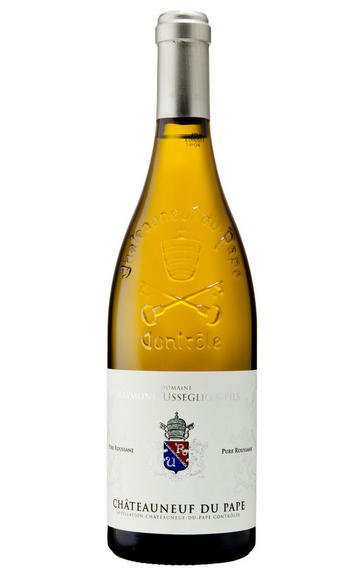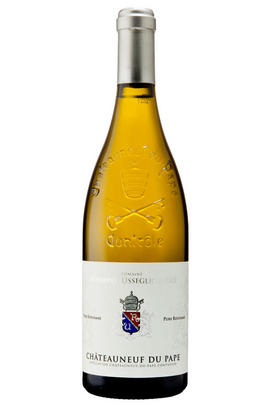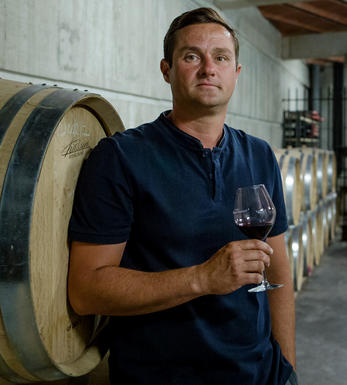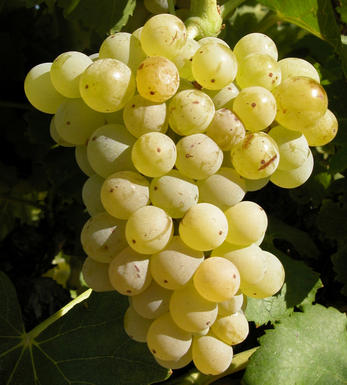
2012 Châteauneuf-du-Pape, Pure Roussane, Domaine Raymond Usseglio & Fils, Rhône

Critics reviews
Jeb Dunnuck - 31/10/2013
About this WINE

Domaine Raymond Usseglio
This third-generation family domaine, of Italian origin, is today run by Raymond’s son, Stéphane Usseglio. The estate counts 24-hectares in Châteauneuf-du-Pape, all of which have been managed biodynamically since 2011. Their vineyards are divided equally between the galet-strewn parcels around Orange, the sandy soils of Courthézon and the alluvial, clay soils of the Crau plateau and the village of Bédarrides. Stéphane continues to innovate, using small, new oak barrels alongside the traditional foudres, as well as experimenting with concrete and terracotta amphorae of varying shapes and sizes. These winemaking techniques enhance the characteristics of each grape variety, carefully highlighting the particularities of each.
Stéphane’s 2021 wines are a great success, albeit 20-25% down in volume against their average yield. The wines show their trademark power and structure; but as we’ve seen with other producers, they also have lower levels of alcohol and higher acidity than the last two vintages. While this freshness makes them more approachable in youth than in some years, their structure will ensure they are nonetheless worthy of cellar ageing. They are wines to return to throughout their ageing process.

Châteauneuf-du-Pape
The most celebrated village of the Southern Rhône, Châteauneuf-du-Pape is the birthplace of the now indispensable French Appellation d’Origine Contrôlée system – imperfect though it may be. Compared to the Northern Rhône, the vineyards here are relatively flat and often feature the iconic galet pebbles – the precise benefits of which are a source of much debate. Minimum alcohol levels required by the AOC are the highest in France, but at 12.5% it is well below the natural generosity of Grenache, which only achieves its full aromatic potential when it is fully ripe and laden with the resultant high sugars. Syrah and Mourvèdre contribute the other defining elements in the blend, adding pepper, savoury spice and structure to the decadent Grenache. There are a further 10 permitted red grape varieties which can be used to adjust the “seasoning”. Of the five white varieties permitted, it is Grenache Noir’s sibling – predictably perhaps – Grenache Blanc, which dominates, though Roussanne shows a great deal of promise when handled well, notably at Château de Beaucastel.

White Rhône Blend
With the exception of the wines from Condrieu and Château-Grillet virtually all Rhône Valley whites are made from blends.
In the north, the white wines of Hermitage, Crozes-Hermitage, St-Joseph, and St-Péray are produced from blends of Marsanne and Roussanne. Generally Marsanne is the dominant partner and it lends colour, body and weight to the blend, as well as richly scented fruit. Roussanne, a notoriously low yielder and pernickety to grow, produces intensely aromatic wines which contribute bouquet, delicacy and finesse to the blend.
Until about 15 years ago there was very little interest in southern Rhône whites as it was widely believed that the combination of dull non aromatic grapes and the baking summer heat meant quality wine production was nigh impossible. Since then the quality has improved markedly through the introduction of cool fermentation techniques and increased plantings of northern Rhône white grapes.
The base of many blends is still Grenache Blanc, a widely planted variety producing fresh wines with apple-like fruits, often with hints of aniseed. Ugni Blanc is still found in many blends, as is Clairette though their general lack of character and definition has led to a reduction in plantings. The future for southern Rhône whites appears to lie with Roussanne, Marsanne, and, increasingly, Viognier.


Buying options
Add to wishlist
Description
One can be sure of two things when analysing the two properties named Usseglio in Châteauneuf-du-Pape; firstly that one will not encounter anyone named Raymond Usseglio at the domaine named Raymond Usseglio or anyone named Pierre Usseglio at the domaine named Pierre Usseglio. Secondly, and more importantly, that both properties now make outstanding wine. As it happens, 2012 is one of the most eloquent illustrations of this statement that one would wish to find.
Pure indulgence, this 100 percent Roussanne has been fermented and aged in 100 percent new French barrel, but wears its oaky livery exceptionally lightly. Honeycomb, nectarine and poached pear are evidenced, with a spicy twist on the finish.
wine at a glance
Delivery and quality guarantee